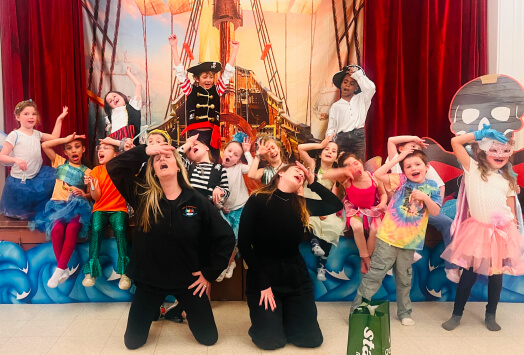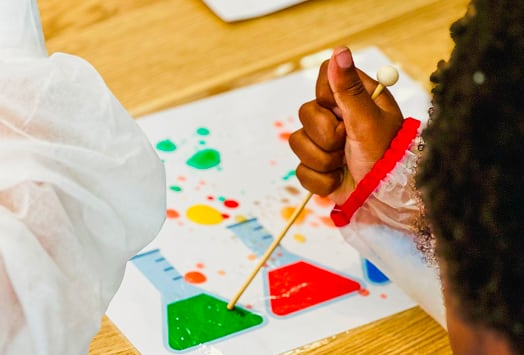A more inclusive future can start with you and the way you communicate with students and families. The ways we use language to honor the perspectives and feelings of others can make a big difference, and with kids, it has the potential to shape the future.
This Pride month, one way educators can support LGBTQ+ youth and families is by respecting the language children, teenagers, and adults use to self-identify. Identity is a personal process that looks different from person to person. As educators, we need to do our best to continue to learn, lead with empathy, and validate others' experiences and identities even if they are unfamiliar to us.
In this blog, we’ll discuss how you can use pronouns to create a more inclusive classroom and use Sawyer features to collect pronoun data from your customers.
Pronouns 101
Think back to the first day of school — who was your first friend? How did they identify themselves? What pronouns did they use? As a child, you might not think a lot about how other kids identify, but as an adult, you’re probably aware that there are more than two ways to identify gender. Creating a space where families and children can have the freedom to identify as their authentic self can create a more inclusive classroom — and world — where differences are celebrated. Start creating a safe space for children by honoring pronouns.
If you aren’t familiar with pronouns, they are a common way to communicate one’s gender. Most children start using pronouns in the second year of life to refer to themselves, friends, family, and strangers.
Introducing kids to pronouns at a young age can help them understand the different ways people express gender and give them the words to express their own identity. As children get older, they may realize that a loved one uses a pronoun like they or them rather than she or he to refer to themselves. Others may only know adults who refer to themselves as he or she. Some children and teenagers may find that they relate to a different pronoun other than those assigned to them at birth.
Examples of Pronouns
Honoring a person’s name and pronouns shows respect and acknowledgment of their gender and identity. Examples of pronouns that people use, in order of nominative, objective, possessive determiner, possessive pronoun, and reflexive:
- She, her, her, hers, and herself
- He, him, his, his, and himself
- They, them, their, theirs, and themself
- Ze/zie, hir, hir, hirs, and hirself
- Xe, xem, xyr, xyrs, and xemself
- Ve, ver, vis, vis, and verself
You might be thinking - how do I approach asking my customers for their family members’ pronouns? Why would I want to ask these questions?
In the same way that we cannot assume someone’s name, we can’t assume someone’s pronouns. To start asking for pronouns, you can simply ask, introduce your pronouns when you meet a person or ask parents to put pronouns on name tags. These actions can inspire others to share their pronouns or simply give them the assurance that they're safe to honor their true self whenever they desire.
You can also use Sawyer form fields to learn more about the customers you serve.
How to use Sawyer features to be more gender-inclusive
1. Use form fields to ask for pronouns
Sawyer form fields are a great tool to collect information from customers. Consider adding a “What pronouns does your child identify with” question to your registration forms. Feel free to leave this section open-ended for parents to fill!
To learn more about creating form fields, you can read our help center guide here.
2. Customize rosters to see pronouns
If you decide to ask for pronouns during customer registration, you can adjust your roster settings to show those answers. Simply click into roster settings, select your pronoun form question to display on your roster, and press save. Once complete, this information will be surfaced across every one of your activities!
3. Communicate with children
Depending on the age of the students you serve, kids and their parents may be unfamiliar with different ways to express gender identity. Everyone is at a different place in their life and level of openness about their journey. If you’d prefer to leave pronouns out of your registration questions, here are some questions you can ask while teaching students:
- What are your pronouns?
- Do I have permission to use your pronouns in class?
- When calling home, do I have permission to use these pronouns?
- Would you like to speak with me separately?
Why creating an inclusive and open space for kids is important
Nelson Mandela once said, “if you talk to a man in a language he understands, that goes to his head. If you talk to him in his language, that goes to his heart.” Creating a space where words can be shared safely and openly can impact kids positively for life! Inclusive education and language are designed to help all children participate and learn in a way that honors their identity. Being included in language, discussion, and curriculum can empower children to be confident in themselves and feel accepted for who they are, increasing self-confidence and assurance both in and outside of the classroom.
Inclusive language is defined as language that “acknowledges diversity, conveys respect to all people, is sensitive to differences, and promotes equal opportunities,” according to the Linguistic Society of America. When you work with children, you have a unique opportunity to shape how children think about inclusive language. Incorporating inclusive pronouns at a young age can encourage children to be open about gender and identity for life!
Resources to continue your education
This blog was put together with resources from The Trevor Project and GLSEN, two leading organizations working to create safe, inclusive environments for LGBTQ+ youth. Below are more resources so you can use to expand your knowledge and continue to put in the work to be the best ally and educator you can be.
- GLAAD Media Reference Guide, 10th Edition
- Toolbox for using gender-inclusive language in English
- Using Inclusive Language: Guidelines and Examples from Rider University
- Inclusive Language Guide from Northwestern University's Family Institute
- Linguistic Society of America: Guidelines for Inclusive Language
- Colorado State University Inclusive Language Guide
- Coming Out Handbook





















.png)




















